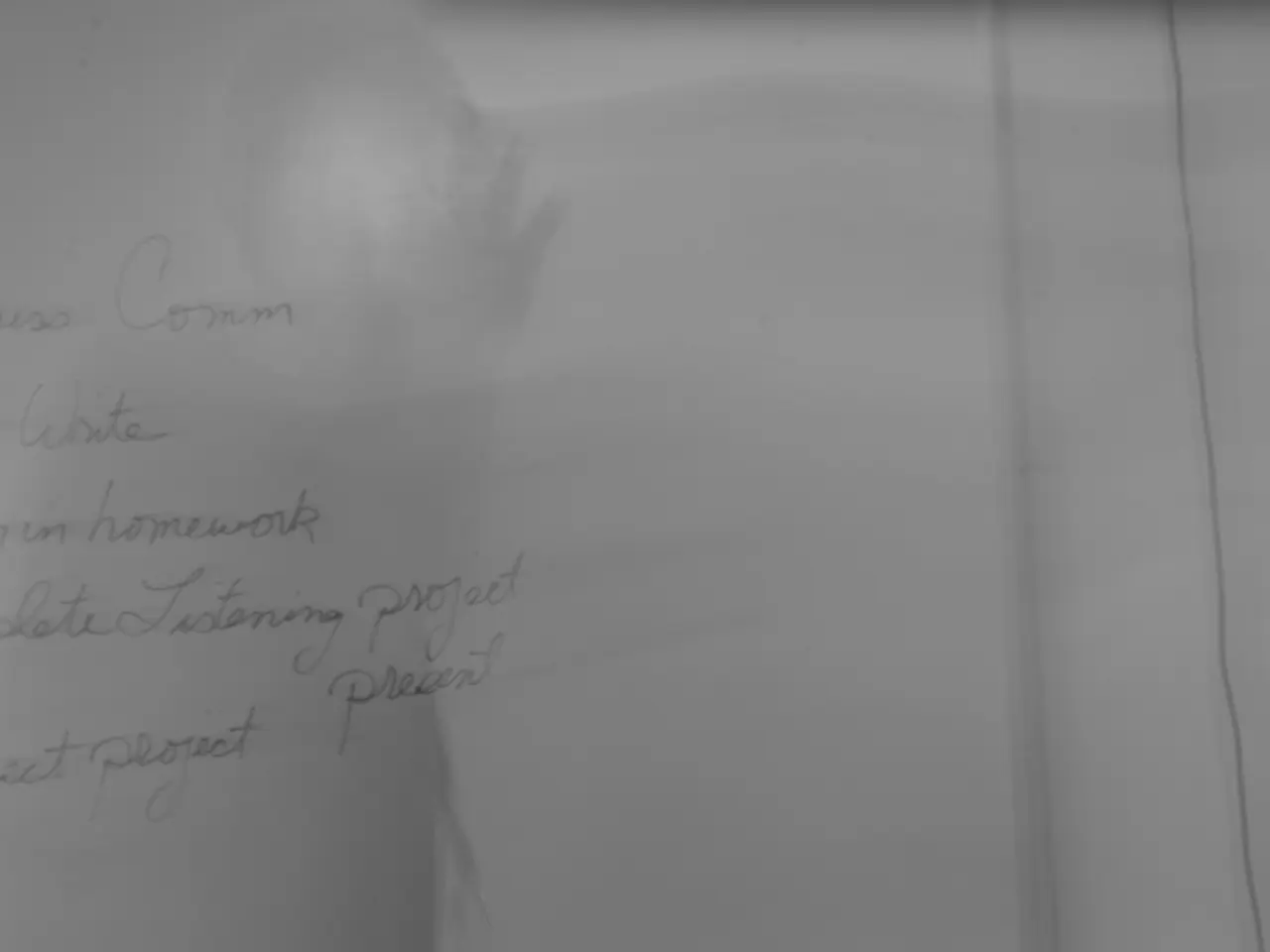Workplace Problem-Solving Illustrations:
Want to slay that job interview? Here's the lowdown on sharing impressive problem-solving experiences that'll make 'em take notice.
In the workplace, problem-solving is like an ace up your sleeve. It keeps things running smoothly, even when issues arise. Every job comes with its fair share of challenges – from tight deadlines to handling customer complaints. And interviewers, like myself, dig deep into your problem-solving skills to find someone who tackles obstacles head-on, not one who shoves 'em under the rug.
So, how to shine in an interview with your problem-solving prowess? Use the dang STAR technique! It's a nifty strategy that organizes your answer in a clear and captivating way. Here's the breakdown:
- S: Describe the context in which a problem cropped up.
- T: Explain the actual challenge you faced.
- A: Share the actions you took to address the problem.
- R: Talk about the outcome of your actions.
Putting the Spotlight on the Situation
Start off by painting the picture, giving the interviewer a snapshot of the scenario. For instance, maybe your team's morale and productivity plummeted unexpectedly, or you faced a dispute among colleagues. Keep it concise, but offer enough detail to create a vivid image.
Breaking Down the Task/Challenge
Clarify the specific problem you needed to tackle. What goals were you aiming to achieve, and what complex challenge needed your attention? Focus on the problem - not yet your actions. Remember, you want the interviewer to be intrigued and asking, "What happened next?"
Shining Light on Your Actions
Describe the steps you took to solve the problem. This showcases your critical thinking and analytical skills. Maybe you conducted one-on-ones with team members, advocated for their concerns with upper management, or initiated team-building activities. Whatever it was, make it sparkle!
Bragging About Results
Lastly, discuss the outcomes of your actions. Employers want to know your problem-solving skills make a difference. Highlight any positive feedback from your boss or team members, and if possible, quantify the success. For example, the team's morale improved significantly, productivity levels bounced back, or the team's overall satisfaction went up.
Common Situations to Mention
- Resolving an issue with a difficult client when they complain about a product or service
- Figuring out a solution when equipment or technology breaks down or fails
- Dealing with a mistake you've made on an important project
- Handling a tight deadline when unexpected challenges threaten completion
- Settling a disagreement between colleagues who aren't getting along
- Improving productivity for a team that is underperforming
- Persuading colleagues to get on board with an idea they are resistant to
When You've Got Limited Experience
Got very little work experience under your belt? No worries! Think about examples from school group projects, internships, or part-time jobs. Maybe you coordinated schedules, resolved disagreements, or found ways to improve your team's process.
Here are Five Problem-Solving Examples to Spark Your Imagination
- Improving Collaboration in a Stalled Project. If you teamed up to get a group presentation off the ground despite different availability, this is your story!
- Revitalizing a Marketing Campaign. If you turned around a marketing campaign that was tanking by focusing on the right audience and messaging, go on and share!
- Streamlining Operational Processes. If you took initiative to automate a previously manual step in an assembly line and boosted efficiency, share away!
- Resolving Communication Barriers Between Teams. If you bridged a gap between sales and product development teams with workshops and better communication, this is your tale!
- Resolving Customer Complaints and Enhancing Service Quality. If you revamped a customer service system to improve response times and drove down complaints, this is perfect for your arsenal!
Boost Your Problem-Solving Skills to Fizgig Wizard Level
Remember, problem-solving is a career-long skill. From fresh-faced newbies to seasoned pros, anyone can up their game!
- Research and Learn from the Past: Look back at past problems you've faced and how you handled them. You might just discover a winning strategy you hadn't realized before.
- Brainstorm with Creative Thinking: Think outside the box! Don't limit yourself to the first idea that pops into your head. Explore various possibilities to discover innovative solutions.
- Always Have a Plan B: Having a backup plan can come in handy when things don't go according to plan. Be ready to pivot and adjust course if needed.
- Timeframe and Flexibility: Set a timeframe for your action plan, but remember it's not cast in stone. Be ready to adjust as circumstances change.
So there you have it! Now you're equipped with the tools to wow 'em during an interview, sharing your top-notch problem-solving adventures like a boss. Bring on the interview questions!
- In a group project, I addressed the challenge of coordinating schedules and resolving disagreements among team members, resulting in an improved presentation and enhanced collaboration.
- During my internship at XYZ Corporation, I revitalized a marketing campaign that was performing poorly by focusing on the correct audience and adjusting the messaging, leading to a significant improvement in engagement and sales.
- To streamline operational processes in my part-time job, I introduced an automation technique to a manual assembly line step, thus boosting efficiency and reducing manual labor.
- At my first job, I bridged the communication gap between the sales and product development teams by organizing workshops and fostering better communication, leading to increased sales and product satisfaction.
- In my role as a customer service representative, I restructured the customer service system to ensure prompt responses and reduce customer complaints, ultimately improving customer satisfaction and service quality.
To continue my growth as a problem-solver, I research past challenges to learn from my strategies, brainstorm creatively to find innovative solutions, always have a plan B, and remain flexible in adjusting my action plan as circumstances change.







